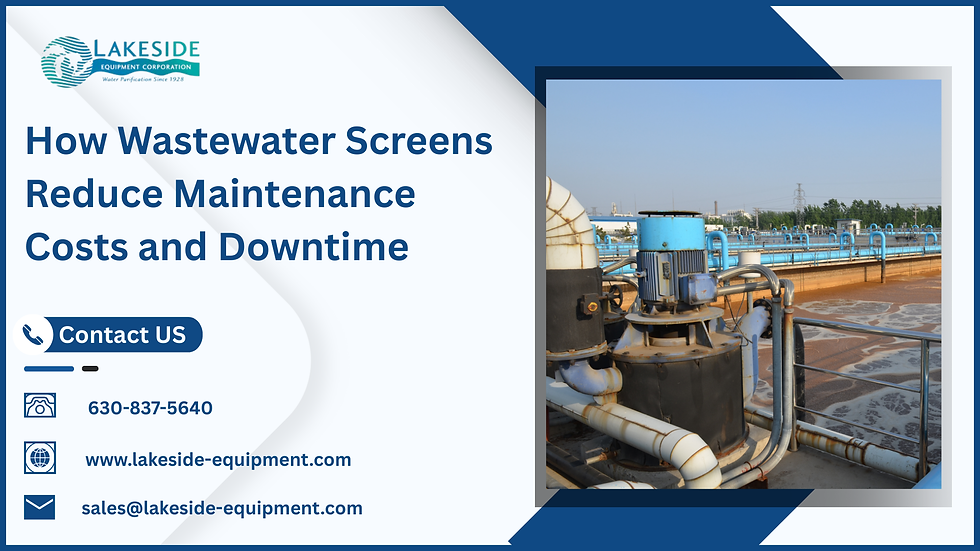Demystifying Wastewater Treatment: How a Wastewater Treatment Plant Works
- lakesideequipment

- Apr 2, 2024
- 2 min read
Water is essential for life, but not all water is created equal. Wastewater, the water that has been used in homes, businesses, and industries, often contains contaminants and pollutants that make it unsafe for reuse or disposal. This is where wastewater treatment plants step in, playing a crucial role in protecting public health and the environment by cleaning and purifying wastewater before it is released back into natural water sources. In this blog, we'll delve into the inner workings of wastewater treatment plants, exploring how they function and why they are essential for our communities.
Why is water treatment important? Water treatment is vital for safeguarding public health and preserving the environment. Wastewater contains a variety of pollutants, including bacteria, chemicals, and other harmful substances, that can pose serious risks to human health and aquatic ecosystems if not properly treated. By treating wastewater before it is discharged into rivers, lakes, and oceans, water treatment plants help prevent the spread of disease, protect aquatic life, and ensure the safety of our drinking water supplies.
So, how does a wastewater treatment plant work? The process typically begins with the collection of wastewater from homes, businesses, and industries through a network of underground pipes known as sewers. Once collected, the wastewater is transported to the treatment plant, where it undergoes a series of physical, chemical, and biological processes to remove contaminants and pollutants.
One of the key components of a wastewater treatment plant is the wastewater clarification process. During clarification, large solids and debris are removed from the wastewater through a process called sedimentation. This is typically achieved using settling tanks or clarifiers, where the wastewater is allowed to sit undisturbed, allowing gravity to separate the heavier solids from the water.

Another important element of wastewater treatment is the use of mechanical equipment such as Archimedes screw pumps. These pumps play a vital role in moving wastewater through the various stages of the treatment process, ensuring that it flows smoothly and efficiently from one treatment unit to the next. Archimedes screw pumps are particularly effective for handling wastewater with high solids content, making them a popular choice for wastewater treatment plants around the world.
Once the wastewater has been clarified and solids have been removed, it undergoes further treatment to remove dissolved pollutants and contaminants. This may involve processes such as biological treatment, where microorganisms are used to break down organic matter, and chemical treatment, where chemicals are added to the wastewater to remove harmful substances.
Finally, the treated wastewater undergoes disinfection to kill any remaining bacteria and pathogens before it is discharged back into the environment. This is typically achieved using chlorine or ultraviolet light, which effectively sterilize the water and ensure that it meets the required standards for safe disposal.
In conclusion, wastewater treatment plants play a vital role in protecting public health and the environment by cleaning and purifying wastewater before it is discharged back into natural water sources. Through a combination of physical, chemical, and biological processes, these plants remove contaminants and pollutants from wastewater, ensuring that our water supplies remain safe and clean for future generations. From wastewater clarification to the use of Archimedes screw pumps, each step in the treatment process plays a crucial role in ensuring the effectiveness and efficiency of wastewater treatment plants.




Comments